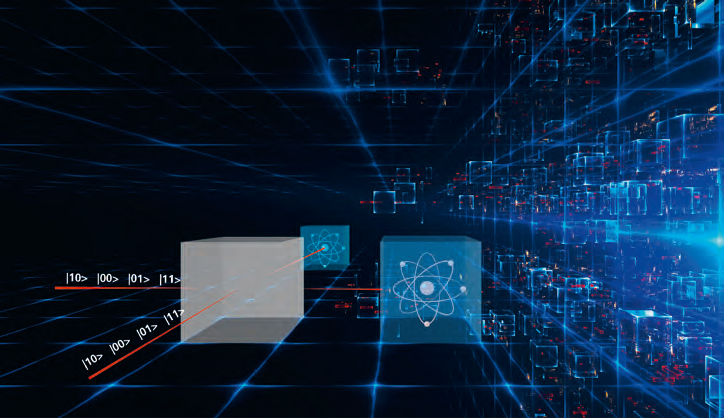Dawn of quantum technology
With increasing digitalization, data and communications security is also becoming more and more important. Quanta are tap-proof, which makes them a promising means of communication. The Fraunhofer Heinrich Hertz Institute and 23 other partners from research and industry are developing systems for quantum communication within the scope of the project "Quanten-Link-Erweiterung" (Q.Link.X).


This technology uses quantum states as information carriers. This means that the data cannot be copied or read unnoticed.
Expansion of range
The aim of the project is to develop physically tap-proof fiber-glass networks. The quantum information is transmitted through photons. The range, however, is currently limited to under 100 km. The solution: quantum repeaters (QRs) that reinforce, process, and link the signals of the individual stages without security restrictions.
Test environment for QR systems
The Fraunhofer Institute for Telecommunications, Heinrich Hertz Institute, HHI provides the application-oriented fiber-glass test environment for the developed QR solutions. Various systems, from quantum points to diamond F-centers and a combination of atomic and ionic systems are compared with one another and evaluated on transmission paths between 10 km and 100 km in length – an important step when it comes to transferring the principle into an application. As part of the project, improved wavelength multiplexing protocols with additional quantum communication and classic transmission channels are being tested for existing fiber-glass communication networks.
The following partners are involved in Q.Link.X in addition to Fraunhofer HHI:
• Rheinische Friedrich-Wilhelms-Universität Bonn
• Technical University of Munich
• Technical University of Dortmund
• Technical University of Berlin
• University of Stuttgart
• University of Paderborn
• Saarland University
• Free University of Berlin
• Leibniz Institute for Solid State and Materials Research Dresden
• Ruhr University Bochum
• Swabian Instruments GmbH
• Leibniz University, Hanover
• Max Planck Institute of Quantum Optics (Garching)
• Julius-Maximilians-Universität Würzburg
• University of Bremen
• Heinrich Heine University Düsseldorf
• University of Ulm
• Humboldt University of Berlin
• University of Kassel
• Johannes Gutenberg University of Mainz
• Karlsruhe Institute of Technology
• Ludwig-Maximilians-Universität, Munich
The project is being funded by Germany’s Federal Ministry of Education and Research.
Last modified: